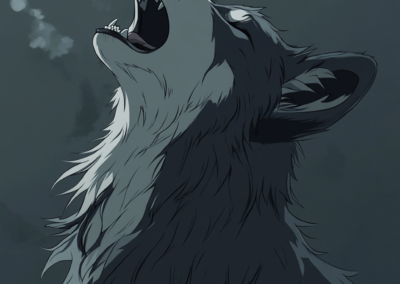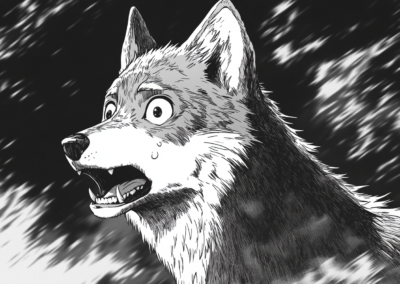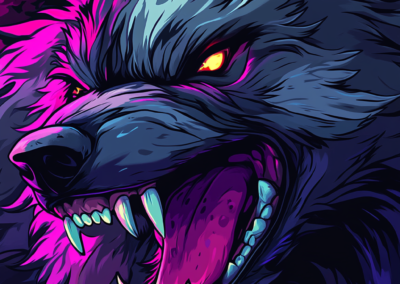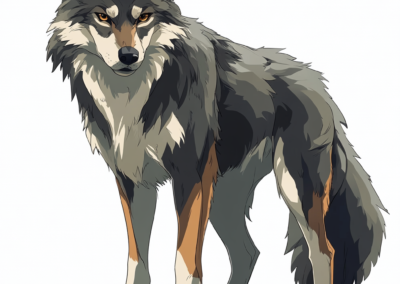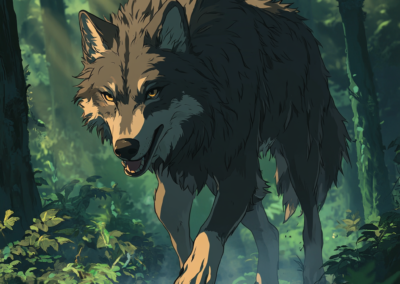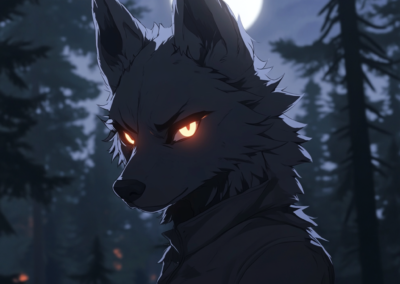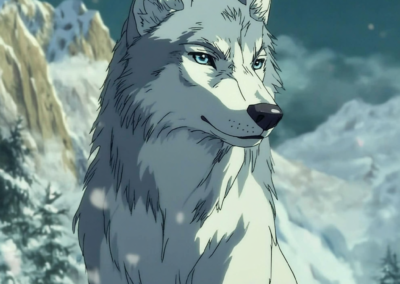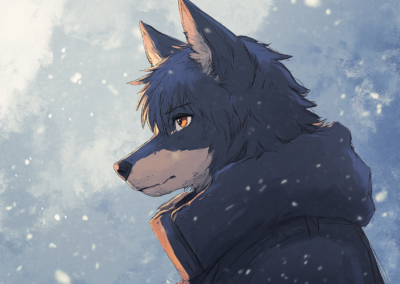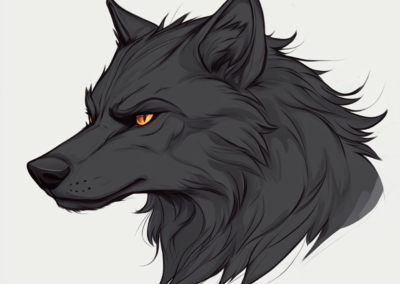Anime Wolf

Wolves in Anime Media
Wolves in anime are more than just majestic creatures; they carry deep symbolism, representing strength, loyalty, freedom, and even the delicate balance between humans and nature. Whether they appear as fierce guardians, loyal companions, or mythical deities, anime wolves captivate fans with their stunning designs and emotional impact.
In this guide, we’ll explore the artistry and storytelling behind anime wolves, from the realistic and powerful depictions in Princess Mononoke to the emotional journeys of Wolf’s Rain and Wolf Children. Whether you’re here to admire the beauty of wolves in anime or draw inspiration for your own art, this guide will highlight some of the most iconic and beautifully drawn wolves in anime history.
Let’s dive into the world of anime wolves and uncover why they continue to fascinate fans across the globe!
Top Anime Featuring Wolves: A Step-by-Step Visual Showcase
Anime has brought wolves to life in breathtaking ways, from fierce protectors to loyal companions and mythical beings. Let’s explore some of the top anime where wolves take center stage, celebrated for their stunning visuals, deep symbolism, and emotional impact.
1. Wolf’s Rain: The Journey to Paradise
- Why It Stands Out: Wolf’s Rain is a masterpiece of storytelling and artistry, where wolves are depicted as both mysterious and powerful. The wolves disguise themselves as humans to survive, but their true forms are drawn with sleek, elegant designs, detailed fur, and realistic motion.
- Key Visual Highlights:
- Kiba and his pack running through desolate landscapes, their forms blending seamlessly with the environment.
- Close-ups of the wolves’ piercing eyes, reflecting their determination and primal spirit.
“The wolves in Wolf’s Rain are not just animals; they are symbols of survival, freedom, and the eternal search for a better world.”

2. Princess Mononoke: Guardians of the Forest
- Why It Stands Out: Studio Ghibli’s Princess Mononoke features some of the most iconic wolves in anime. Moro, the wolf goddess, and her pack are drawn with a perfect balance of beauty and ferocity, symbolizing nature’s strength against human destruction.
- Key Visual Highlights:
- Moro’s regal form, with flowing fur and sharp, intelligent eyes.
- San (the wolf girl) riding on the backs of the wolves, showcasing their bond and power.
- Action scenes where Moro and her pack move with fluid, realistic motion.
“Moro and her wolves are more than protectors—they are nature’s wrath and wisdom combined.”

3. Spice and Wolf: Holo, the Wise Wolf
- Why It Stands Out: Spice and Wolf takes a unique approach, blending the charm of a humanized wolf deity with the elegance of her true form. Holo, the Wise Wolf, is drawn with soft, flowing fur and graceful movements that reflect her divine yet playful personality.
- Key Visual Highlights:
- Holo’s transformation scenes from human to wolf form, emphasizing her powerful yet gentle nature.
- Her wolf form, with long, flowing fur and lifelike anatomy, particularly in emotional or climactic moments.
“Holo’s wolf form is a perfect blend of beauty, wisdom, and the untamed spirit of the wild.”

4. Wolf Children: A Heartfelt Tale of Identity
- Why It Stands Out: Wolf Children beautifully captures the duality of wolves, portraying them as both wild and gentle. Ame and Yuki, the wolf children, explore their identities as both humans and wolves, creating emotional and visually striking moments.
- Key Visual Highlights:
- The children’s playful wolf forms, with soft, childlike features that reflect their innocence.
- Emotional transformations as Ame and Yuki transition between wolf and human forms during pivotal moments.
“The wolf forms of Ame and Yuki symbolize the struggle between embracing freedom and finding one’s place in the world.”
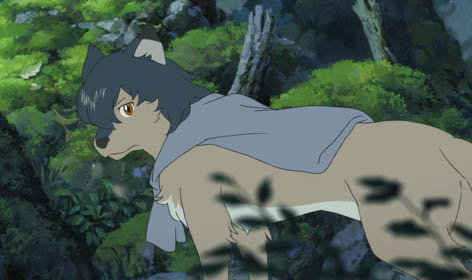
How to Draw Anime Wolves: A Step-by-Step Guide
Step 1: Start with Basic Shapes
- Draw a circle for the head and a slightly smaller oval for the snout. If you are thinking I can’t draw circles or triangles, then just get a sheet of paper and practice holding your pen and lightly draw circles. With a bit of time you will improve your
- Use a long oval for the torso and connect it to a smaller oval for the hips.
- Sketch cylindrical shapes for the legs and paws, with triangles at the ends for the toes.
Pro Tip: Use light, rough lines at this stage—this is your foundation.
Step 2: Refine the Head and Facial Features
- Draw the ears as tall, pointed triangles positioned at the top corners of the head.
- Sketch a soft, rounded snout with a small nose at the tip.
- Add expressive eyes—sharp and slightly slanted for a fierce look, or round and wide for a more gentle appearance.
- Outline the jaw with sharper edges for an angular, wolf-like look.
Detail Tip: Anime-style wolves often have exaggerated eyes to convey emotion, similar to humanized expressions.

Image Above: Once you get familiar with drawing shapes you will see that the wolf’s head is made up of shapes, draw these shapes faintly until you are happy with the proportions then draw your outlines
Step 3: Shape the Body and Legs
- Outline the torso, keeping the chest slightly wider to convey strength.
- Refine the legs with muscular curves, and remember to add joints (ankle and knee) for realism.
- Sketch large paws, with visible pads or claws depending on the pose.
- Add a flowing, bushy tail to balance the body.
Pose Tip: Experiment with dynamic poses like running, jumping, or crouching to show motion and power.
Step 4: Add Fur and Textures
- Outline the fur, adding jagged lines around the neck, back, and tail to emphasize thickness.
- Use softer, smaller tufts of fur on the face, chest, and joints to keep the design clean.
- For shading, focus on the back, under the belly, and areas where fur overlaps to create depth.
Art Style Note: Anime wolves typically feature more stylized, angular fur around their neck and tail for dramatic flair.

Image above: Experiment with different eye shapes facial features etc
Drawing Wolves in Different Poses
Anime wolves often appear in dynamic and expressive poses. Here are a few examples:
- Standing Pose: Balanced and strong, with weight evenly distributed on all four legs.
- Running Pose: Elongated body, legs extended forward and backward to show motion.
- Crouching Pose: Lowered body with bent legs, ears pinned back to emphasize focus or aggression.
- Howling Pose: Head tilted upward with a slightly open mouth—perfect for adding dramatic impact.
Perspective Tip: Practice drawing wolves from different angles—front, side, and three-quarters—to improve your skills.
Common Mistakes to Avoid When Drawing Wolves
- Over-Simplifying Anatomy: Ensure the legs have proper joints, and the body has weight and structure.
- Ignoring Proportions: Wolves are longer and leaner compared to dogs, with broader shoulders and slender hips.
- Flat Fur Designs: Add volume with jagged, layered lines, especially on the neck, back, and tail.
- Static Poses: Avoid overly stiff or lifeless poses. Use curves and angles to create fluidity and motion.

Image above: Experiment with shading line stokes, notice how shading the fur can add depth to your drawing
Getting Started
Don’t be afraid of making mistakes, and cultivate your style. We hope you have enjoyed this article, if you want to really improve your anime drawing then check out The Anime Art Academy (below) affordable online courses. Please note that this is an affilate link and we will get a small commission if you buy any of their services.



